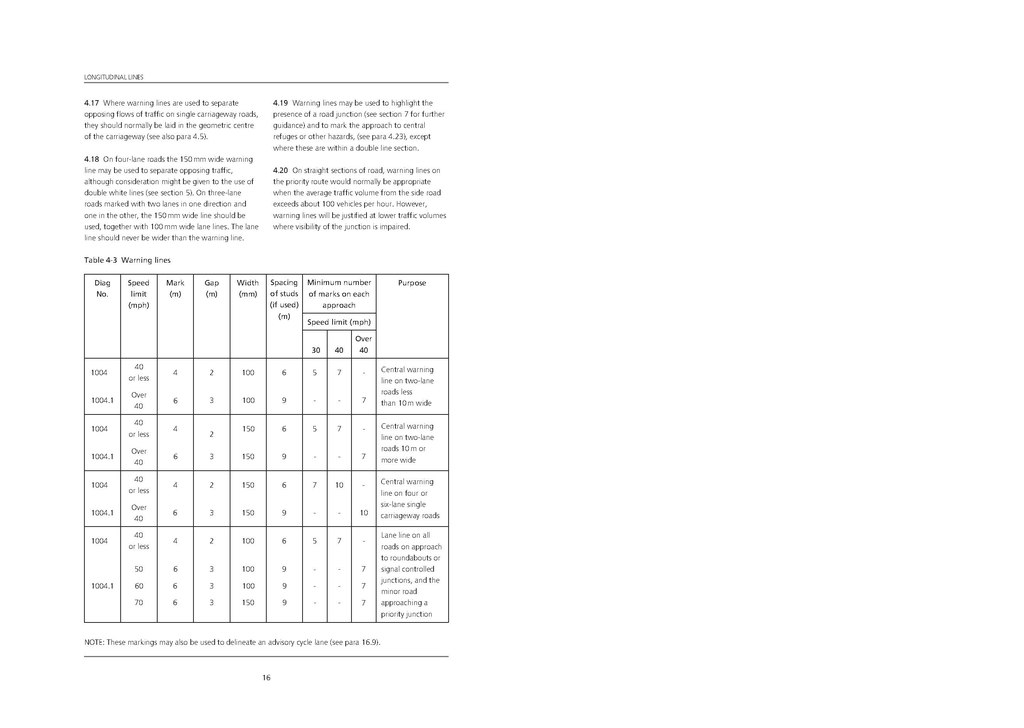4.17 Where warning lines are used to separate opposing flows of traffic on single carriageway roads, they should normally be laid in the geometric centre of the carriageway (see also para 4.5).
4.18 On four-lane roads the 150 mm wide warning line may be used to separate opposing traffic, although consideration might be given to the use of double white lines (see section 5). On three-lane roads marked with two lanes in one direction and one in the other, the 150 mm wide line should be used, together with 100 mm wide lane lines. The lane line should never be wider than the warning line.
4.19 Warning lines may be used to highlight the presence of a road junction (see section 7 for further guidance) and to mark the approach to central refuges or other hazards, (see para 4.23), except where these are within a double line section.
4.20 On straight sections of road, warning lines on the priority route would normally be appropriate when the average traffic volume from the side road exceeds about 100 vehicles per hour. However, warning lines will be justified at lower traffic volumes where visibility of the junction is impaired.
| Diag No. |
Speed limit(mph) |
Mark (m) |
Gap m) |
Width (mm) |
Spacing of studs (if used) (m) |
Minimum number of marks on each approach |
Purpose | ||
|---|---|---|---|---|---|---|---|---|---|
| Speed limit (mph) | |||||||||
| 30 | 40 | Over 40 | |||||||
| 1004 | 40 or less |
4 | 2 | 100 | 6 | 5 | 7 | – | Central warning line on two-lane roads less than 10 m wide |
| 1004.1 | Over40 | 6 | 3 | 100 | 9 | – | – | 7 | |
| 1004 | 40 or less |
4 | 2 | 150 | 6 | 5 | 7 | – | Central warning line on two-laneroads 10 m or more wide |
| 1004.1 | Over 40 | 6 | 3 | 100 | 9 | – | – | 7 | |
| 1004 | 40 or less |
4 | 2 | 150 | 6 | 7 | 10 | – | Central warning line on four or six-lane single carriageway roads |
| 1004.1 | Over 40 |
6 | 3 | 150 | 9 | – | – | 10 | |
| 1004 | 40 or less |
4 | 2 | 100 | 6 | 5 | 7 | – | Lane line on all roads on approach to roundabouts or signal controlled junctions, and the minor road approaching a priority junction |
| 50 | 6 | 3 | 100 | 9 | – | – | 7 | ||
| 1004.1 | 60 | 6 | 3 | 100 | 9 | – | – | 7 | |
| 70 | 6 | 3 | 150 | 9 | – | – | 7 | ||
NOTE: These markings may also be used to delineate an advisory cycle lane (see para 16.9).
16
